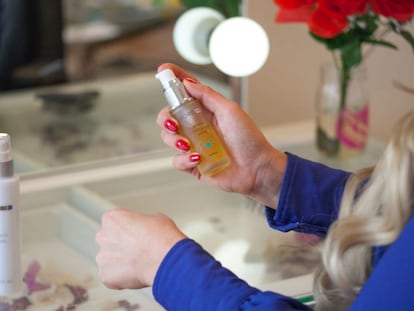The secret formula behind the world’s priciest anti-aging cream
Japanese beauty giant Shiseido aims at the luxury market with premium treatments and cosmetics that include a very pricey skincare product
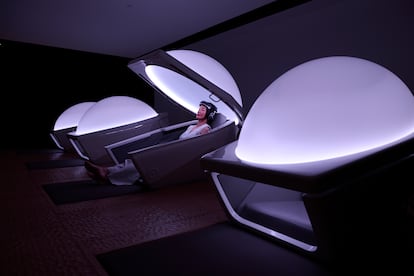
“I’m sorry. There are no appointments available until next week,” said the salesperson at Japanese beauty giant Shiseido’s flagship store in Ginza, Tokyo’s glamorous shopping district. The sought-after appointments are for Inner Beauty Charge, a futuristic, orb-shaped pod where customers can indulge in a 30-minute meditation session surrounded by soothing sounds, aromas and lighting. For about $30, you can “disconnect and recharge.” After you exit the luminous orb, explore the boutique where you’ll find captivating makeup classes, personalized anti-aging serums, and virtual try-on screens for flawless foundations, sultry eye shadows and beguiling mascaras.
It’s a hot and sunny day in Tokyo. Many people in the city carry umbrellas to shield themselves from the sun. Nearby, Shiseido has two more temples of well-being. One is an 11-story tower designed by Spanish architect Ricardo Bofill, with a delicatessen, restaurant and tea room. It stands on the site where Shiseido founder Arinobu Fukuhara opened his first pharmacy in 1872. In 1902, Fukuhara added soda fountains and ice cream in the store where he sold toothpaste, medicines and tonics. Adjacent to Bofill’s tower is a four-story building that houses Clé de Peau Beauté, Shiseido’s luxury skincare and makeup brand. The star here is La Crème, one of the world’s most expensive anti-aging face creams. A 1.7 ounce (50 milliliter) jar sells for $968, competing with other prestigious brands like La Mer from Estée Lauder and Switzerland’s La Prairie.
La Crème is a leading luxury brand in Japan, and is also popular in China and other Asian markets. Now, it’s focusing on the European market, which has different beauty needs and practices. Mizuki Hashimoto, brand director at Clé de Peau, says European customers want fragrances and cosmetics, while Asians prioritize skincare. Europeans also prefer single-application moisturizers, while Asians tend to favor multi-step regimens that include both lotions and creams.
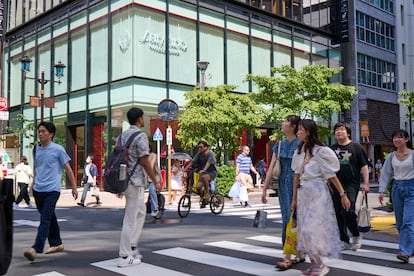
La Crème is a luxury even for well-off Japanese, who earn an average monthly salary of $3,300. Shiseido offers an even more expensive version, La Crème Synactif, which costs $1,350 and is part of an exclusive line that is applied by a machine in a special booth under the supervision of lymphatic therapists. The cost is exorbitant, but a relative bargain compared to certain limited-edition products. Last year, Clé de Peau celebrated the 40th anniversary of its premium face cream with a limited-edition version that cost $17,800. The diamond-encrusted jar came with a matching 24-karat, gold-plated lipstick case.
The beauty industry is enormous in Japan, one of the world’s biggest markets for cosmetic products behind only the United States and China. The sector is projected to grow from $30.5 billion in 2023 to nearly $40 billion in 2028. According to the Japanese Ministry of Economy, Trade and Industry, the country has 3,000 brands, including global giants like Kao and Kosé. Shiseido is the leading Japanese company with 39,000 employees, 1,200 researchers and 12 factories worldwide.
The Clé de Peau Beauté product line is the pride of Shiseido and La Crème is the jewel in the crown. The cream is meticulously produced in the Shiseido Global Innovation Center located in the industrial city of Yokohama, 25 miles south of Tokyo. The 16-story tower in the futuristic Minato Mirai 21 neighborhood boasts over 172,000 square feet of space and 500 scientists dedicated to research and development. Shiseido has five similar centers in the United States, China, Singapore and France.
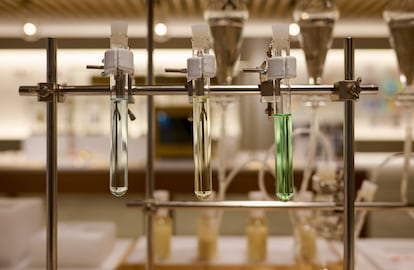
The La Crème product promises a more radiant complexion produced by brightening ingredients that improve the skin’s ability to repair and protect against stress-related damage. The company also claims that consistent use of La Crème will improve skin elasticity and give it a more youthful appearance.
According to Shiseido spokesperson Nathalie Broussard, the main reason for the high cost of La Crème is its ingredients. All Clé de Peau products contain an exclusive complex developed by Shiseido called skin-empowering illuminator. This complex activates the skin’s natural ability to defend, repair and regenerate itself. The formula includes rare and expensive ingredients like Japanese oyster shell extract and Angelica acutiloba extract, a plant found in northern Japan. Broussard says that no other company offers a product with a higher concentration of skin-empowering illuminator than La Crème.
“When you invest in a pricey product, you naturally want to see results, and our products definitely deliver,” said Broussard, listing the other expensive and exotic ingredients that drive up the price of La Crème. One ingredient is CeraFerment, a yeast extract found in Japan’s Akita prefecture (northern Honshu), an area famous for people with good complexions. According to Shiseido, CeraFerment stimulates capillaries and collagen production in the body. Another ingredient is Florentine Iris extract, which according to Clé de Peau reduces the depth of wrinkles, improves skin hydration and elasticity for an overall improvement in skin tone. Broussard says it takes three years to grow and harvest the root of this plant and another three years to dry, extract and refine the essence. “La Crème has 60 other ingredients,” said Broussard. “Getting that perfect mix and texture is complex and involves over 100 steps.”

Clé de Peau Beauté and other Shiseido products also include 4MSK, an ingredient that fades dark spots and improves uneven skin tone. Dr. Kiyoshi Sato, a company scientist and pioneer in skin luminosity research, contributed to the development of this powerful whitening agent. “La Crème is our product with the highest concentration of this agent,” said Sato. “However, all the ingredients we use are important. If they prove effective, their price is not an obstacle.”
Dermatologist Sara Carrasco, a member of the Spanish Academy of Dermatology and Venereology, says the glamor factor is another reason for the high prices in the luxury cosmetics industry. “It’s like comparing inexpensive eyeglass frames from a pharmacy to fancy ones made by Dior. They both work, but they give off a totally different vibe. The beauty industry works the same way. Expensive creams may do the job, but they don’t always have more active ingredients,” said Carrasco. “I’m not implying that they’re a scam. Rather, they have rare and costly active ingredients that drive up production expenses. These ingredients are more glamorous, although not always more effective or efficient,” she said, noting that there are very good anti-aging products available for under $200.
But Carrasco says skin beauty does not depend solely on cosmetics. “These products are great but having quality skin is all about leading a healthy lifestyle. Eating well, keeping cortisol levels in check and sunscreen, of course. All are way more important than any fancy cream.”
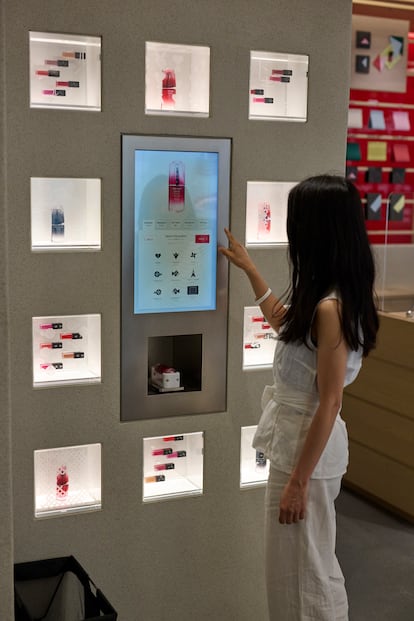
La Crème has been on the market for 40 years and has undergone eight reformulations, each one involving years of research and development work. “It usually takes around three to five years to fully understand the market needs and get started on research. After that, it takes one to three more years to source the materials and ingredients, followed by another two years to develop the formulation. Depending on the product, the development process can be quite lengthy,” said Mizuki Hashimoto, Clé de Peau Beauté's Chief Brand Officer. Time is money, but the luxury market is in no hurry. And the clients have very deep pockets.
Sign up for our weekly newsletter to get more English-language news coverage from EL PAÍS USA Edition
Tu suscripción se está usando en otro dispositivo
¿Quieres añadir otro usuario a tu suscripción?
Si continúas leyendo en este dispositivo, no se podrá leer en el otro.
FlechaTu suscripción se está usando en otro dispositivo y solo puedes acceder a EL PAÍS desde un dispositivo a la vez.
Si quieres compartir tu cuenta, cambia tu suscripción a la modalidad Premium, así podrás añadir otro usuario. Cada uno accederá con su propia cuenta de email, lo que os permitirá personalizar vuestra experiencia en EL PAÍS.
¿Tienes una suscripción de empresa? Accede aquí para contratar más cuentas.
En el caso de no saber quién está usando tu cuenta, te recomendamos cambiar tu contraseña aquí.
Si decides continuar compartiendo tu cuenta, este mensaje se mostrará en tu dispositivo y en el de la otra persona que está usando tu cuenta de forma indefinida, afectando a tu experiencia de lectura. Puedes consultar aquí los términos y condiciones de la suscripción digital.
More information
Archived In
Últimas noticias
Most viewed
- Reinhard Genzel, Nobel laureate in physics: ‘One-minute videos will never give you the truth’
- Oona Chaplin: ‘I told James Cameron that I was living in a treehouse and starting a permaculture project with a friend’
- Pablo Escobar’s hippos: A serious environmental problem, 40 years on
- Why we lost the habit of sleeping in two segments and how that changed our sense of time
- Charles Dubouloz, mountaineering star, retires at 36 with a farewell tour inspired by Walter Bonatti


